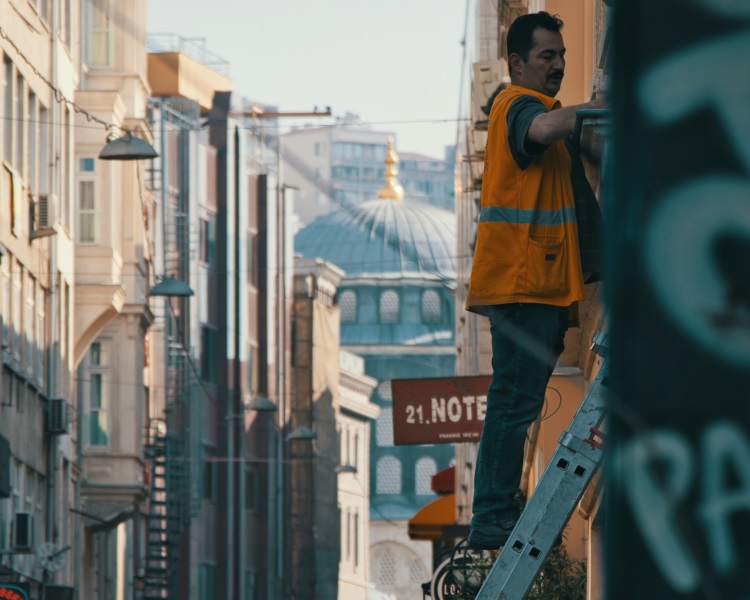
Working at height is a hazardous business - obviously. You don't need us to tell you to be careful when you're standing at the the top of a 20ft ladder or on the roof of a multi-storey building. You know, instinctively, the danger such a situation poses.
What you might not realise is how broad the definition of 'working at height' actually is. You don't have to be all that far off the ground to be at risk - guidance from the Health and Safety Executive (HSE) states that 'work at height' means "work in any place where, if there were no precautions in place, a person could fall a distance liable to cause personal injury".
Even a short drop can result in serious injuries, so before you - or your employees - enter any situation where work at height is necessary, it's important to 1) think about what could go wrong, and 2) take steps to minimise working at height risks.
Working at height risks
The risks of working at height include:
Falling from height
Falls from height are the leading cause of work-related fatal injuries in Great Britain, so preventing falls should always be your number-one priority when planning work at height.
Falls can be caused by...
- Slippery or unstable surfaces - think an icy ledge, a fragile glass roof or a crumbling cliff edge.
- Faulty equipment (e.g. ladders, safety harnesses, fall arrest blocks).
- Unsafe worker behaviour.
Depending on the work situation, there may be additional fall risk factors in play. For example, if you're working up a ladder, a fall may be caused by strong winds or somebody bumping into the ladder.
It's worth reiterating at this point that even a short fall can be deadly. Yes, more distance from the ground generally means more risk, but even if you're just standing on a chair to change a light bulb, there is still a possibility that you could fall off and hurt yourself. Working at height is never risk-free.
Dropped objects.
When you conduct a risk assessment prior to working at height, you should consider not only the workers who are actually up there doing the job, but also the people who might be on the ground below them.
The area directly below a work-at-height site is a dangerous place to be. Even small objects can cause a lot of damage when dropped from high up, so just imagine the injuries a bucket of paint or a heavy power tool could inflict.
Overhead power lines.
Overhead powerlines (OHPLs) are another huge working at height risk. Touching a power line can result in death by electrocution, and even if you survive, you may be left with severe burns.
HSE guidelines recommend that, if your work would bring you within 10 metres of an OHPL, you should "seek specialist advice and guidance from the owner of the power line" before you make a start. This rule also applies to work that is more than 10m from a power line but could still breach it, e.g. if a ladder or crane were to topple over.
How to Minimise Working at Height Risks
There are a number of steps you can take to mitigate the working at height risks before and during a job. Here are some recommendations:
- Avoid working from height entirely if viable alternatives exist.
- Prioritise fall prevention over fall arrest.
- If possible, take steps to prevent workers from reaching spots where a fall may occur. For example, when working on a rooftop, a restraint lanyard (secured to a suitable anchor point) can stop you from getting too close to the roof's edge.
- If fall prevention is not practical, use fall arrest equipment to catch workers mid-fall and save them from hitting the ground. Make sure you have a suitable rescue plan in place to ensure that workers are not left suspended for an extended period of time.
- Inspect all height safety / height access equipment before each use.
- If your safety depends on an item that is no longer in good condition, do not continue until you have replaced it.
- If possible, cordon off the area directly below the work site to keep passersby out of danger.
- Use tool tethers to prevent tools and other objects from dropping to the ground.
- Consider postponing the job if poor weather conditions would make the work unsafe.
- Don't rush! Moving slowly and carefully makes accidents less likely.
- Before erecting a ladder, scaffold or elevated work platform, make sure there are no power lines overhead. If you can't avoid working near power lines, speak to the network operator before you proceed.
SEE ALSO: Ladder Safety in the Workplace
Photo by Nomadic Julien on Unsplash

 Ladders
Ladders  Step Ladders
Step Ladders  Loft Ladders
Loft Ladders  Scaffold Towers
Scaffold Towers 








